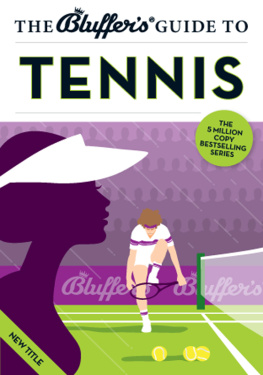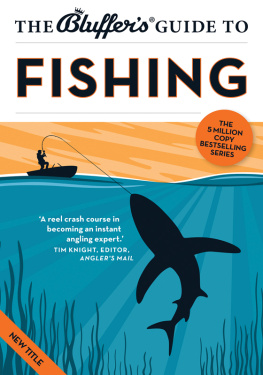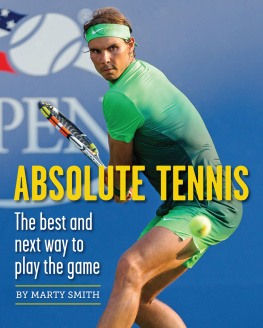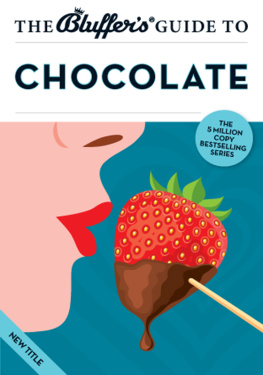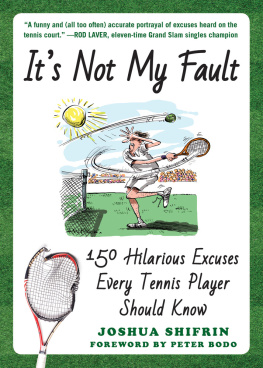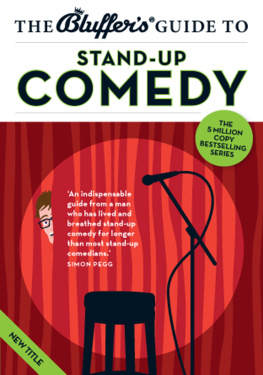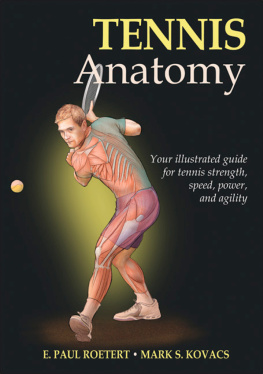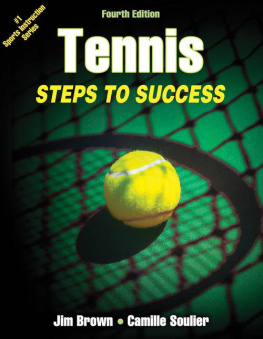

Hammersley House
5-8 Warwick Street
London W1B 5LX
United Kingdom
Email:
Website: bluffers.com
Twitter:
Published 2014
Copyright Bluffers 2014
Publisher: Thomas Drewry
Publishing Director: Brooke McDonald
Series Editor: David Allsop
Design and Illustration: Jim Shannon
All rights reserved. No part of this publication may be reproduced, stored in a retrieval system or transmitted in any form or by any means, electronic, mechanical, photocopying, recording or otherwise, without the prior permission of Bluffers.
A CIP Catalogue record for this book is available from the British Library.
Bluffers Guide, Bluffers and Bluff Your Way are registered trademarks.
| ISBN: | 978-1-909937-16-1 (print)
978-1-909937-17-8 (ePub)
978-1-909937-18-5 |

The major tournaments at the time banned the greedy pros because they seemed to possess all the moral backbone of a filleted rabbit.

TENNIS GENESIS
I ts a demonstrable fact that most tennis players are people, and that most people are humans. Furthermore, humans have all sorts of failings. These failings are called human failings. Which is good because nobody wants to go around with hamster failings.
Two of the most prevalent of these human failings are greed and hyperbole. Both are particularly present in athletic competitions, which of course include the game of tennis. Studies indicate that more and more people are becoming prone to describing their achievements, athletic and otherwise, in the most glowing and grandiose terms. In their vaulting ambition to be better than their friends and neighbours at everything from dog grooming to eighteenth-century French literature, people constantly overstate their abilities. Indeed, these descriptions are similar to Hercules: very heroic, but undeniably mythical.
Tennis players are not immune to these failings. Far from it. In fact, if you were to get bored and wander onto an online tennis forum, you would be amazed at how many players say something along the lines of:
I have no problem hitting winners off my forehand and backhand wings, but every time I try to volley, the ball either gets wedged in my racquets throat or hits me in the eye.
This sort of statement sends red flags up to tennis aficionados. If the player is getting hit in the eye, he or she is clearly not very good. Not only that, but said player probably solely plays people on crutches, the only opponents against whom he or she can possibly hit winners.
To become the armchair expert at tennis you deserve to be, the particular human skill known as bluffing should be harnessed. Claim it. Embrace it. Own it. As a result, you will be able to impress total strangers with your command of the vast array of tennis facts and minutiae that tennis and this guide provide. You will be able to walk from tennis venue to tennis venue, confident and sure of your ability to hold up your end of semi-profound tennis discussions. For example, when passing by the Royal Box at Wimbledon and the Duke of Yorkshire Pudding enquires, I say, my good citizen, do you happen to know if these chaps are on serve?, you will not only know what the hell hes talking about, but you will also know how to answer him without being escorted from the premises by the royal henchmen at the order of the royal factotum.
But before you do anything else before you even consider opening your mouth and venturing an opinion on this hallowed game of skill and athleticism youre going to need a crash course in tennis history. So take a deep breath and strap yourself in. Tennis history wont ever get any shorter than this
In the beginning Oh, never mind. Nobody cares. But some say that the game began in France in the fourteenth century, albeit without racquets. So it was more like patball than tennis, and it evolved into another precursor of the modern game called royal tennis (after the French word tenez which means hold or here you are, not that this really helps). Apparently it was popular at the court of Henry VIII, and subsequently became known as real tennis, which never really took off because the indoor courts were so expensive to build. Ultimately, the game became lawn tennis and only a nerdy tennis historian or a citizen of Englands reputed second city would know the following titbit of tennis trivia.
The modern game can be traced back to 1860 in Birmingham. Apparently, they had a lot of free time in this Midlands manufacturing powerhouse, which later became the birthplace of heavy metal music (Led Zeppelin, Black Sabbath, Judas Priest), not to mention The Move, ELO, The Moody Blues and a few more. This is all vital bluffing information, but back to tennis history. In those days there werent quite so many opportunities to let your hair down and headbang, and what with most women walking around in conservative Victorian garb back then, it is safe to assume that men would have spent a lot of time wildly imagining a game which at some point in the future might involve the fairer sex wearing noticeably shorter skirts. So they invented a primitive form of tennis, played on a lawn.
All you need to know is that a couple of young Birmingham blades, one called Major Harry Gem and the other with the unmistakeably Brummie name of Juan Bautista Luis Augurio Perera, met in a pub called the Welch Harp and agreed that there wasnt a suitable sport which could be played by both sexes and which involved women wearing rather fewer clothes than was then considered acceptable. Actually, the history of their exact conversation is a little hazy, but it is safe to assume that it was something along those lines. So Harry and Juan (who was a Spanish-born entrepreneur) set about inventing lawn tennis. This is absolutely true. And the Welch Harp is now better known as the Racquet Court Inn.
This knowledge may be useful in conversations in pubs to indicate that you are either a tennis nerd or from Birmingham. Perhaps after a couple of pints with your friends, when the subject has turned to the weather, you can say:
YouBirmingham has more miles of canal than Venice.
FriendHow extraordinary.
YouAnd not only that, Birmingham is the birthplace of modern tennis!
Just dont be surprised when the pub landlord shows you and your friends the door after relieving you of your car keys.
A whole lot of historic things have happened in Birmingham between then and now. Most, like canals, the industrial revolution, gunmaking, inventions, jewellery, heavy metal music, more canals, etc., did not concern tennis. So its time to jump ahead to an even more modern tennis history.
From its beginnings in Victorian Birmingham to well into the next century, tennis players were divided into two main groups non-paid amateurs and paid professionals. The amateurs played for the love of the sport (and doubtless some under-the-table hard cash). As for the pros, getting paid over the table to play tennis was considered to be cheap and seedy. Therefore only players of high moral fibre played top levels of tennis for free. The major tournaments at the time (e.g., Wimbledon) banned the greedy pros because they seemed to possess all the moral backbone of a filleted rabbit.
Next page
